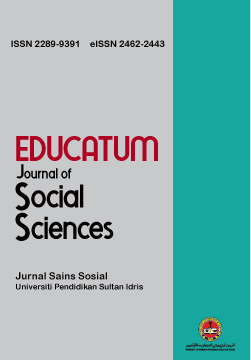Learning stations in enhancing remedial pupils’ basic numeracy post-pandemic: A case study
DOI:
https://doi.org/10.37134/ejoss.vol9.1.3.2023Keywords:
remedial pupils, numeracy, learning stations, post-pandemicAbstract
This case study aims to explore the usage of learning stations to teach basic numeracy and to engage level one remedial pupils to learn basic numeracy after pandemic. After the pandemic, many factors will determine whether remedial pupils struggle to grasp basic numeracy skills, especially in light of the new educational norm that the COVID-19 pandemic has provoked. However, learning stations can assess pupils’ understanding through its unique features, improving pupil’s learning numeracy, especially in this post-pandemic COVID-19. Data was collected from three remedial officers via interview and five remedial primary level one pupils in Sandakan, Sabah through observations. On top of that, analysis of documents such as APDM data and numeracy screening data were performed to gain a comprehensive picture of this usage of learning stations. Findings reveal that learning stations were potentially useful to teach basic numeracy for that remedial primary level one pupil, in particular, 30.95% of the remedial pupils passed the numeracy screening test after learning at the learning stations. At the end of this study, that remedial pupil was able to achieve the learning goals through learning stations.
Downloads
References
Abu Bakar, A. L., Othman, I. W., Mokhtar, S., & Esa, M. S. (2021). The impact of COVID-19 on students’ willingness to communicate in English in higher education institutions in a digital context (HEIs). Journal of Information System and Technology Management, 6(23), 21-33. https://doi.org/10.35631/jistm.623002
Aydogmus, M., & Senturk, C. (2019). The effects of learning stations technique on academic achievement: A meta-analytic study. Research in Pedagogy, 9(1), 1-15. https://doi.org/10.17810/2015.87
Batman, D., Saka, A. Z., Kan, S., & Saka, T. (2019). Effects of using the learning stations technique to teach the electrical current topic on students’ physics subject performance. Journal of Education and Training Studies, 7(11), 23-32. https://doi.org/10.11114/jets.v7i11.4384
Buchanan, D., Hargreaves, E., & Quick, L. (2022). Schools closed during the pandemic: Revelations about the well-being of ‘lower-attaining’ primary-school children. Education 3-13, 1-14. https://doi.org/10.1080/03004279.2022.2043405
Bulunuz, N., & Jarrett, O. S. (2010). The effects of hands-on Learning Stations on building American Elementary Teachers’ Understanding about earth and Space science concepts. EURASIA Journal of Mathematics, Science and Technology Education, 6(2), 85-99. https://doi.org/10.12973/ejmste/75230
Department for Education. (2014). The national curriculum in England: key stages 1 and 2 framework document. https://www.gov.uk/government/publications/national-curriculum-in-england-primary-curriculum.
Engzell, P., Frey, A., & Verhagen, M. (2021). Learning inequality during the Covid-19 pandemic. Proceedings of the National Academy of Sciences, 118(17). https://doi.org/10.31235/osf.io/ve4z7
KPM. (2017). Dokumen Standard Kurikulum dan Pentaksiran (Semakan 2017) Matematik Tahun 3. Bahagian Pembangunan Kurikulum. http://bpk.moe.gov.my/index.php/terbitan-bpk/kurikulum-sekolah-rendah/category/228-dskp-tahun-3
Pho, D. H., Nguyen, H. T., Nguyen, H. M., & Nguyen, T. T. (2021). The use of learning station method according to competency development for elementary students in Vietnam. Cogent Education, 8(1), 1-27. https://doi.org/10.1080/2331186x.2020.1870799
Radzi, N. M. (2022). The challenges in teaching and learning for teachers and students during COVID-19 quarantine time. Journal of Learning and Educational Policy, (26), 18-25. https://doi.org/10.55529/jlep.26.18.25
Raghubar, K. P., & Barnes, M. A. (2016). Early numeracy skills in preschool-aged children: A review of neurocognitive findings and implications for assessment and intervention. The Clinical Neuropsychologist, 31(2), 329-351. https://doi.org/10.1080/13854046.2016.1259387
Sejnost, R. L. (2009). Tools for teaching in the block. Corwin Press.
Tomlinson, C. A. (2017). How to differentiate instruction in academically diverse classrooms (3rd ed.). ASCD.
Wright, R. J., Stanger, G., Stafford, A. K., & Martland, J. (2014). Teaching number in the classroom with 4-8 year Olds. SAGE.on and recommendation
Downloads
Published
How to Cite
Issue
Section
License
Copyright (c) 2023 Sai Hoe Fu, Norhayati Adnan, Siew Len @ Nurul Syakina Yee, Dalmansa Tahil, Lung Lung Tiong

This work is licensed under a Creative Commons Attribution-NonCommercial-ShareAlike 4.0 International License.





